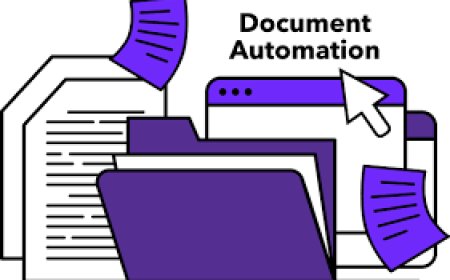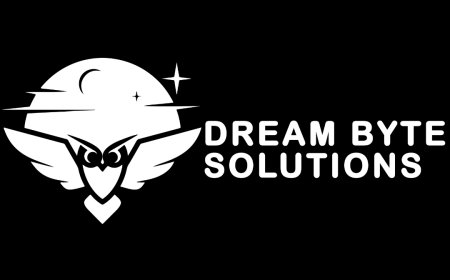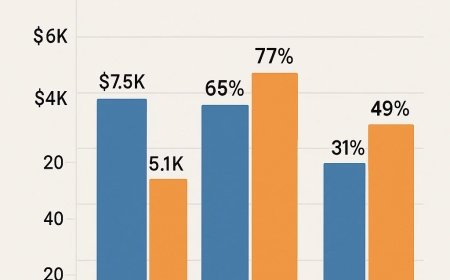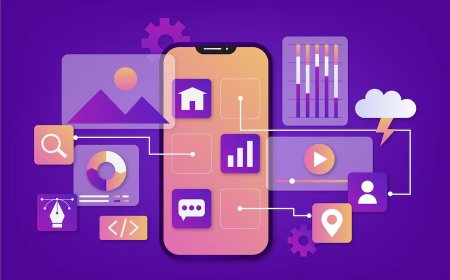AI-Powered Trends in Best Embroidery Digitizing Practices 2025
Explore how AI is transforming the best embroidery digitizing methods in 2025 with faster workflows, precision, and design innovation.
? Introduction
The embroidery industry is witnessing a technological renaissance. As businesses demand speed, precision, and scalability, best embroidery digitizing techniques are now being redefined by artificial intelligence (AI). Gone are the days when manual punch files and traditional software were enough. In 2025, AI-enhanced tools are not only speeding up workflows but also improving the accuracy and creativity of digitized embroidery.
In this article, well explore the modern landscape of embroidery digitizing powered by AI, and how businesses can leverage it to offer more efficient and high-quality services.
? What Is AI-Enhanced Embroidery Digitizing?
AI-enhanced digitizing refers to the integration of artificial intelligence within embroidery software to automate and optimize the process of converting artwork into stitch files. Unlike traditional digitizing, AI can recognize patterns, auto-correct errors, and suggest stitch types based on the fabric or design complexity.
Key Advantages:
-
Time-saving automation
-
High precision in stitch placement
-
Fabric-aware adjustments
-
Smart thread optimization
-
Auto-balancing of design density
? How AI Is Elevating Best Embroidery Digitizing in 2025
Lets break down how AI-driven innovation is raising the bar:
1. Automated Artwork Cleanup
AI tools can now automatically remove backgrounds, enhance resolution, and clean up logos before digitizing begins. This reduces manual prep time and ensures better digitized results.
2. Stitch Path Optimization
AI can analyze the shortest and most efficient stitch paths, saving machine time and thread usage. This is especially useful for bulk production.
3. Smart Fabric Recognition
Modern AI systems can detect whether a design is going on denim, stretch fabric, or leather and adjust the stitch type and density accordingly something that used to take expert manual input.
? Real-Time Error Prediction & Fixes
AI-powered embroidery digitizing software now includes real-time error detection. For instance, if a fill stitch is too dense, the software alerts the user or adjusts automatically, reducing trial and error on the machine.
This not only saves time but prevents material wastage a crucial factor for businesses looking to improve margins.
? AI-Driven Color Management
Another frontier where AI shines is color separation and thread mapping. Tools now suggest the best color transitions and even simulate thread sheen and fabric effect for a better preview.
In 2025, AI software can:
-
Suggest the most accurate thread codes (e.g., Madeira, Isacord)
-
Handle gradient effects in fewer stitches
-
Reduce thread changes and color break issues
?? Best AI Tools for Embroidery Digitizing in 2025
Here are some top tools integrating AI and automation for embroidery:
| Tool Name | Key Feature | AI Functionality |
|---|---|---|
| Wilcom Embroidery Hub | Intelligent stitch simulation | Auto stitch types |
| Hatch 4 (by Wilcom) | Auto-digitize with AI suggestions | Smart color sorting |
| Embrilliance StitchArtist | Built-in artwork cleanup | Error detection |
| AI Stitch Studio | AI-based logo scanning & vector conversion | Fully automated digitizing |
? Workflow Comparison: Traditional vs AI-Based Digitizing
| Feature | Traditional Digitizing | AI-Enhanced Digitizing |
|---|---|---|
| Manual Stitch Input | Required | Automated |
| Fabric Adjustment | Manual | Auto-adjusted |
| Time Required per Design | 13 hours | 1530 minutes |
| Color Sorting | Manual | Smart AI algorithms |
| Error Fixes | Manual corrections | Real-time AI suggestions |
? Benefits for Small Businesses and Freelancers
Even small-scale digitizers and Etsy sellers can benefit from AI-based tools. Some cloud platforms offer pay-per-design pricing models, removing the need for expensive licenses. You get:
-
Faster turnaround
-
Less rework
-
Better client satisfaction
-
Scalable output
? Testing AI Tools Before Full Adoption
Before transitioning fully to AI-enhanced digitizing, consider:
-
Testing with small client jobs
-
Comparing stitch-outs manually
-
Reading AI output reports
-
Watching how it performs on different fabrics
This hybrid testing approach helps maintain the quality assurance embroidery is known for, while still adopting the speed AI brings.
? Future Outlook: Whats Next?
Looking forward, we can expect:
-
Voice-based digitizing (commands like apply satin stitch to logo border)
-
AI avatars for live embroidery previews
-
Full auto-order-to-machine workflow
As machine learning improves, even entry-level users will be able to produce near-professional digitizing outputs using AI platforms.
? Conclusion
The future of best embroidery digitizing is deeply intertwined with artificial intelligence. From faster workflows to smarter error handling, AI is not replacing digitizers it's empowering them. Whether you're a hobbyist or a full-scale business, adopting AI in your embroidery digitizing process can lead to faster turnarounds, better quality, and happier clients in 2025 and beyond.
?FAQs
Q1: Can AI completely replace human digitizers?
No, AI enhances speed and accuracy, but complex or creative designs still benefit from human expertise.
Q2: Is AI-based software expensive?
Many AI-embroidery tools offer subscription models or pay-as-you-go pricing, making them affordable for small businesses.
Q3: Will AI improve the quality of stitch-outs?
Yes, AI improves stitch accuracy, reduces thread waste, and optimizes for fabric all resulting in better output.








&srotate=0)




























